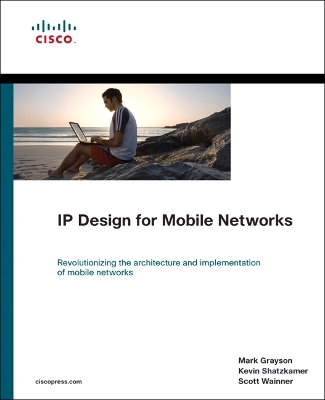Networking Technology
2 total works
As the numbers of remote branches and work-from-home employees grows throughout corporate America, VPNs are becoming essential to both Enterprise networks and Service providers. IPSec is one of the more popular technologies for deploying IP based VPNs. IPSec VPN Design provides a solid understanding of design and architectural issues of IPSec VPNs. Some books cover IPSec protocols, but they do not address overall design issues. This book fills that void. IPSec VPN Design consists of three main sections. The first section provides a comprehensive introduction to the IPSec protocol, including IPSec Peer Models. This section also includes an introduction to site-to-site, network-based, and remote access VPNs. The second section is dedicated to an analysis of IPSec VPN architecture and proper design methodologies. Peer relationships and fault tolerance models and architectures are examined in detail. Part three addresses enabling VPN services, such as performance, scalability, packet processing, QoS, multicast, and security. This title also gives exposure to integration of IPSec VPNs with other Layer 3 (MPLS VPN) and Layer 2 (Frame Relay, ATM) technologies. Management, provisioning, and troubleshooting techniques are also be discussed. Case studies highlight design, implementation, and management advice to be applied in both service provider and enterprise environments.
IP Design for Mobile Networks
by Mark Grayson, Kevin Shatzkamer, and Scott Wainner
Published 11 June 2009
As the cellular world and the Internet converge, mobile networks are transitioning from circuit to packet and the Internet Protocol (IP) is now recognized as the fundamental building block for all next-generation communication networks. The all-IP vision provides the flexibility to deliver cost-effective services and applications that meet the evolving needs of mobile users. RF engineers, mobile network designers, and system architects will be expected to have an understanding of IP fundamentals and how their role in delivering the end-to-end system is crucial for delivering the all-IP vision that makes the Internet accessible anytime, anywhere.
IP Design for Mobile Networks discusses proper IP design theory to effectively plan and implement your next-generation mobile network so that IP integrates all aspects of the network. The book outlines, from both a standards and a design theory perspective, both the current and target state of mobile networks, and the technology enablers that will assist the migration. This IP transition begins with function-specific migrations of specific network domains and ends with an end-to-end IP network for radio, transport, and service delivery. The book introduces many concepts to give you exposure to the key technology trends and decision points affecting today's mobile operators.
The book is divided into three parts:
Part I provides an overview of how IP is being integrated into mobile systems, including radio systems and cellular networks.
Part II provides an overview of IP, the technologies used for transport and connectivity of today's cellular networks, and how the mobile core is evolving to encompass IP technologies.
Part III provides an overview of the end-to-end services network based on IP, including context awareness and services.
Presents an overview of what mobile networks look like today-including protocols used, transport technologies, and how IP is being used for specific functions in mobile networks
Provides an all-inclusive reference manual for IP design theory as related to the broader application of IP for mobile networks
Imparts a view of upcoming trends in mobility standards to better prepare a network evolution plan for IP-based mobile networks
This book is part of the Networking Technology Series from Cisco Press (R), which offers networking professionals valuable information for constructing efficient networks, understanding new technologies, and building successful careers.
ciscopress.com
IP Design for Mobile Networks discusses proper IP design theory to effectively plan and implement your next-generation mobile network so that IP integrates all aspects of the network. The book outlines, from both a standards and a design theory perspective, both the current and target state of mobile networks, and the technology enablers that will assist the migration. This IP transition begins with function-specific migrations of specific network domains and ends with an end-to-end IP network for radio, transport, and service delivery. The book introduces many concepts to give you exposure to the key technology trends and decision points affecting today's mobile operators.
The book is divided into three parts:
Part I provides an overview of how IP is being integrated into mobile systems, including radio systems and cellular networks.
Part II provides an overview of IP, the technologies used for transport and connectivity of today's cellular networks, and how the mobile core is evolving to encompass IP technologies.
Part III provides an overview of the end-to-end services network based on IP, including context awareness and services.
Presents an overview of what mobile networks look like today-including protocols used, transport technologies, and how IP is being used for specific functions in mobile networks
Provides an all-inclusive reference manual for IP design theory as related to the broader application of IP for mobile networks
Imparts a view of upcoming trends in mobility standards to better prepare a network evolution plan for IP-based mobile networks
This book is part of the Networking Technology Series from Cisco Press (R), which offers networking professionals valuable information for constructing efficient networks, understanding new technologies, and building successful careers.
ciscopress.com

